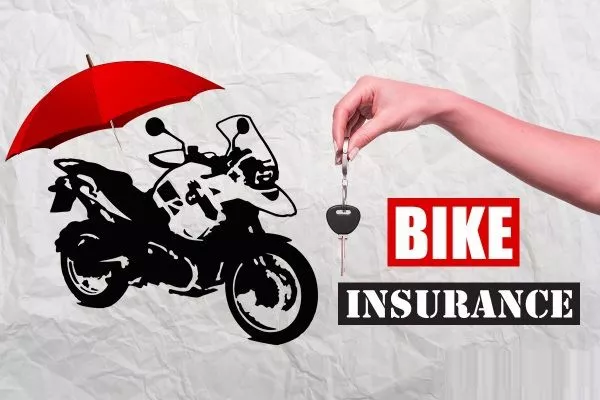When it comes to protecting your valuable possessions, such as your bike, having insurance is essential. One crucial aspect of bike insurance is third-party coverage, which provides financial security in case you’re involved in an accident that causes damage to someone else’s property or injures a third party. In this comprehensive guide, we’ll walk you through the process of claiming third-party insurance for your bike, ensuring that you have a clear understanding of each step.
1. Understanding Third-Party Insurance for Bikes
Before delving into the claims process, it’s vital to understand what third-party insurance for bikes entails. Third-party insurance covers the financial liabilities that arise when you, the policyholder, are responsible for causing damage to another person’s property or causing bodily injury to a third party due to a bike-related incident. This coverage ensures that you are protected from the financial burden of legal claims and compensation.
2. Immediate Steps After an Accident
Ensure Safety: Your safety and the safety of others involved should be your top priority. Move your bike to a safe spot to prevent further accidents.
Inform Authorities: Contact the local authorities, such as the police, and file an accident report. This documentation will be essential when filing your insurance claim.
Gather Information: Collect relevant information from the involved parties, including their names, contact details, and insurance information. Also, gather evidence like photographs of the accident scene, vehicle positions, and damages.
3. Notify Your Insurance Provider
Contact Your Insurer: As soon as possible, inform your insurance provider about the accident. Provide them with accurate and detailed information about the incident, including the date, time, location, and a brief description of what transpired.
Provide Necessary Documents: Your insurance company will require certain documents to process your claim. These may include the accident report filed with the authorities, photographs, your bike’s registration and insurance documents, and the contact information of the other parties involved.
4. Evaluation and Assessment
Insurance Inspection: A representative from your insurance company will likely inspect the damage to your bike. This assessment will determine the extent of the damage and the estimated repair costs.
Third-Party Assessment: If third parties were involved, their insurance companies will also conduct assessments to evaluate the damage to their property or injuries sustained. This is a crucial step in determining liability.
5. Claim Settlement and Resolution
Liability Determination: Based on the assessments, the insurance companies will determine the liability in the accident. If you are found responsible, your insurance company will cover the third-party damages and injuries up to the limits of your policy.
Claim Settlement: The insurance company will negotiate with the affected third parties to settle the claims. They will cover the repair costs of damaged property or medical expenses for injuries sustained, within the policy limits.
Legal Proceedings: In case there is a dispute or reluctance to settle, legal proceedings might be initiated. Your insurance company will provide legal assistance and representation if necessary.
6. Tips for a Successful Third-Party Insurance Claim
Prompt Reporting: Time is of the essence when it comes to reporting an accident to your insurance provider. The sooner you inform them, the quicker the claims process can begin.
Accurate Information: When providing information about the accident, be sure to provide accurate and complete details. Inaccurate or incomplete information could lead to delays or even claim denials.
Document Everything: Keep a record of all communication with your insurance company, including emails, phone calls, and any documents exchanged. This will serve as evidence in case of any disputes.
Be Cooperative: Cooperate fully with your insurance company’s representatives and any third-party assessors. This will help expedite the assessment and settlement process.
Know Your Policy Limits: Understand the coverage limits of your third-party insurance policy. This will give you a clear idea of how much coverage you have in case of an accident.
7. Common Mistakes to Avoid
Delaying Reporting: Failing to report the accident promptly can lead to complications and delays in the claims process. Report the incident as soon as possible.
Lack of Documentation: Not providing sufficient evidence such as photographs, accident reports, and witness statements can weaken your claim.
Inconsistent Statements: Providing inconsistent or contradictory statements can raise suspicion and hinder the claims process.
Neglecting Policy Details: Familiarize yourself with the terms and conditions of your insurance policy. Ignoring important details could lead to misunderstandings and claim denials.
8. Benefits of Third-Party Insurance
Legal Protection: Third-party insurance provides legal protection by covering the costs of legal proceedings if the other party decides to sue.
Financial Security: In case of an accident, the financial burden of compensating third parties for property damage or injuries is transferred to the insurance company.
Peace of Mind: Knowing that you have third-party insurance gives you peace of mind when you’re on the road, as unexpected accidents can happen at any time.
9. Review and Update Your Policy
Periodic Review: It’s essential to periodically review your insurance policy to ensure that it still meets your needs. If your circumstances change, such as acquiring a new bike or moving to a different location, you might need to adjust your coverage.
Policy Renewal: During the policy renewal process, consider assessing whether your coverage limits are still appropriate based on your bike’s value and inflation.
Conclusion
Claiming third-party insurance for your bike is a process that requires a clear understanding of your coverage, prompt action after an accident, effective communication with your insurance provider, and accurate documentation. By following the steps outlined in this guide, you can navigate the claims process with confidence and ensure that you receive the necessary support when you need it most. Remember that being well-informed and prepared is the key to a successful third-party insurance claim, safeguarding both your financial interests and your peace of mind on the road.


